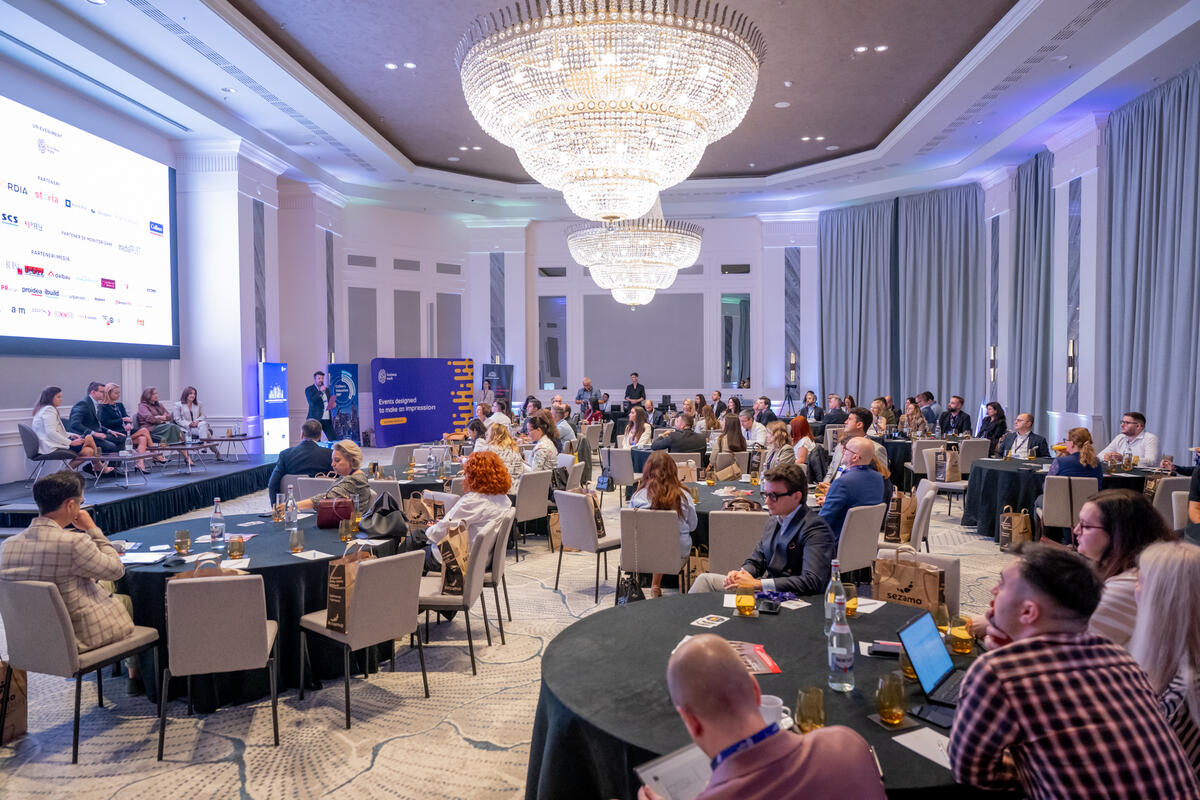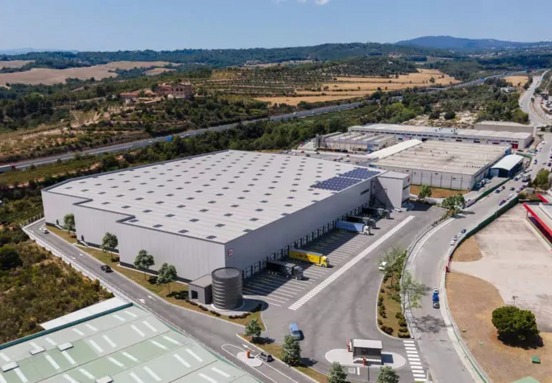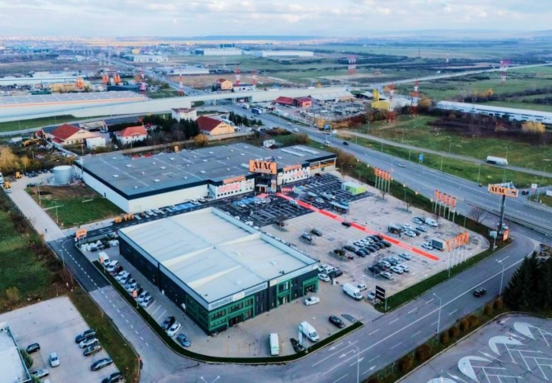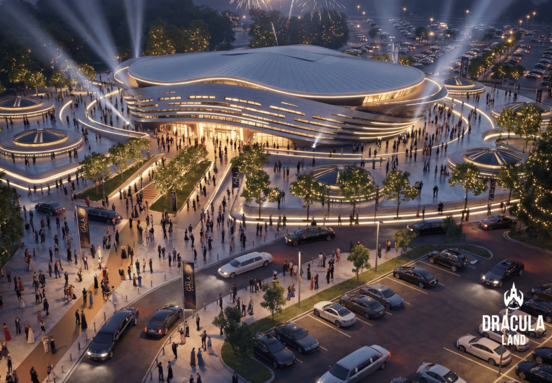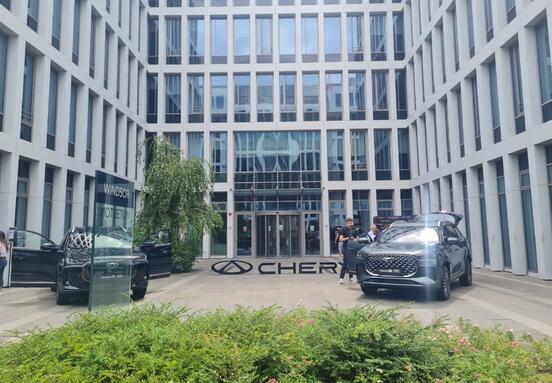PANEL FOCUSED ON THE RETAIL SECTOR
Retailers are facing profound changes in consumer behavior: the preference for the discount segment continues to grow, while the experience zone (restaurants, cinemas, leisure activities) is being redefined. Thus, reinventing retail through value and adaptability becomes essential for survival. This was the consensus among the guests of the first panel, moderated by Simina Niculiță, Partner & Head of Retail Services, Colliers Romania: Geanina Ungureanu (CPI Property Group | Romania), Roxana Stănciulescu (AFI Europe Romania), Sebastian Mahu (IULIUS) and Venera Munjev (CatInvest Eastern Europe).
“This year, people have continued to gravitate toward the discount segment, and the mass-market area has performed very well during collection periods and events such as back-to-school and Easter. I would not say that the home appliances segment has decreased; compared to the pandemic, yes, it has declined, but if we look at the average basket, we don’t necessarily see a drop. However, what affects us significantly is the online segment, which facilitates purchases for this type of product.
In terms of entertainment, at least in our centers, we’ve noticed that consumers miss it. People can no longer afford as many trips and have started saving, so they turn to nearby activities: they want to go to a restaurant with a terrace, to a movie, a play club, a workshop, a concert, a training session. I expect the entertainment trend to remain in demand. Otherwise, I haven’t seen major turbulence or declines in specific segments, apart from seasonality,” said Venera Munjev, Group Asset Manager, CatInvest Eastern Europe.
Next, Roxana Stănciulescu, Head of Retail Leasing Division, AFI Europe Romania, added:
“In the food & beverage segment, we are noticing a point where many brands have grown significantly over the past 5–6 years, driven by the consumption boom, and may face major challenges in the future. I don’t believe that people in large cities will stop going out. There is still demand for cafés and restaurants.
As for discounters, development began years ago in Western Europe, and this trend has started to be visible in Eastern Europe as well. Each segment is building its own consumer base, and discounters will continue to expand massively.
It depends on each brand how it manages the situation. As we saw in 2009–2010, the brands that survived and saw opportunities were network-based ones, those that invested in technology and omnichannel. I notice their effort to bring the online world into offline through various methods to increase in-store traffic.
We have resized hypermarkets. They remain important, especially outside Bucharest. Consumers go to hypermarkets much more often than those in Bucharest. In the future, large home appliance stores will also need to be analyzed to see if they are still relevant on large surfaces. The consumer is changing rapidly, as are shopping habits, so we must observe step by step what happens next.”
In turn, Sebastian Mahu, Head of Asset Management, IULIUS, added:
“Cosmetics and jewelry are two segments that have continued to perform flawlessly this year. This confirms people’s focus on wellness and wellbeing. Regarding jewelry, we note a very positive trend. Studies show that in Romania, people perceive jewelry as an asset that preserves its value. In 2024, there was a slight stagnation, but in 2025, this segment recovered.
The experience zone has been highly polarized. One of the first things Romanians cut are what they consider ‘exceptional expenses’—even going to a restaurant is perceived as a privilege, and many outings have been reduced. However, play areas and fitness centers are on a strong upward trend; they are no longer perceived as luxuries. Retailers must reinvent themselves, and I believe those who understand that the value aspect—including for food—is crucial will be the ones to benefit.”
“The year 2025 will be one of stability. It is essential to prepare for the most difficult scenarios while hoping for more favorable outcomes, especially regarding budgets. Our group owns several shopping centers across the country and in Bucharest, and the differences between cities are evident. Although the malls we manage are already mature, each has its own particularities, and in small and medium-sized cities we have observed more significant growth compared to large urban agglomerations.
We recently completed a renovation project in Cluj, with the opening of Primark, and continue investments in Sun Plaza, adding Pull&Bear and Zara, while the hypermarket area is also set for rehabilitation.
The discount trend has been present for several years and continues to gain ground, as consumers are increasingly sensitive to price and quality. The success of Pepco in children’s products is telling, while Primark has quickly captured the public’s attention. The mid-fashion segment is increasingly eroded by online operators who benefit from small, high-volume packages that pass through customs tax-free, leading to a decrease in shopping center purchases. In this context, the fashion sector is the most affected by current shifts in consumer behavior,” added Geanina Ungureanu, Head of Retail, CPI Property Group | Romania.
PANEL FOCUSED ON THE INDUSTRIAL & LOGISTICS SECTORS
The panel, moderated by Ionuț Oprea, Publisher of “Romania’s Real Estate Guides” Market Pulse Reports, explored how logistics is becoming the driving force behind real estate development in Romania — acting as a differentiator compared to neighboring countries, given the growing need for regional business expansion.
The discussion featured Antoanela Comșa (Global Vision), Andrei Marian (CTP Romania), Dana Bordei (VGP Romania), Valentin Roșu (Park Lane Developments), Georgia Căilean (Helios Phoenix Group), Olga Melihov (MLP Group Romania), and Victor Coșconel (Colliers Romania).
Victor Coșconel, Partner | Head of Office 360° & Industrial | Office, Industrial & Logistics, Colliers Romania, offered an overview of the industrial and logistics sectors:
“Despite the interesting times we are living in — with a complicated international environment and a local context that forces us to pull the handbrake — logistics stands out. This is due to the significant gap between Romania and the neighboring countries.
Businesses around us need to expand, and that pushes us forward. We have seen very good dynamics, about 25% above the same period last year. The sector continues to grow.
In terms of rent, prices have stabilized at the upper limit, while vacancy remains very low. When I talk to my regional colleagues — in countries like Poland or the Czech Republic, which we used to look up to — we see much higher vacancy rates there.
By the end of the year, I expect to see some surprising transactions, though it remains to be seen how many will stay in Romania. Both logistics and manufacturing are showing strong demand and interest. The western part of the country remains preferred, but I believe Bucharest has not lost its role as the main engine.”
In this context, Dana Bordei, Commercial Country Manager, VGP Romania, shared her company’s perspective:
“We are developing a new concept in Sibiu — small industrial units. It’s our first attempt to educate the market on what small, fully authorized units entail.
We’re preparing to expand into two new cities, both of which are important logistics and production hubs. It’s important to monitor development dynamics across the region, especially since Romania faces the challenge of proving its added value.
Our portfolio is growing, but so are those of neighboring countries. Just as Romania grew spectacularly 10–15 years ago, now other countries in the region are developing fast, and we must pay close attention.
We are becoming a regional logistics hub, but competition will intensify — especially from Turkey, which benefits from more flexibility. As an EU member state, we face more bureaucracy. Romania is growing, but we must position ourselves correctly within the new paradigm and understand the regional context, with more courage.
Romania is in a very different economic and regional context than it was at the beginning of its logistics development. VGP has tripled its portfolio in the past four years and expects to reach 600,000 sqm by 2026.”
Georgia Căilean, COO Asset Management, Helios Phoenix Group, added:
“In the first months of this year, we focused on phased development, delivery, and leasing of the spaces already built.
We delivered over 20,000 sqm in Otopeni and prepared the foundation for phase two. In Constanța, in the Palas area, we completed a building that is almost 100% leased and are preparing for a new project.
We also have a presence in Cluj, where we delivered the first phase.
Our goal is not only to deliver square meters but also to strengthen our relationships with tenants, adapting to their needs. Flexibility and adaptability are essential requirements when delivering industrial space.
We no longer speak about traditional warehouses, but about structures that must adjust to clients’ evolving needs. Some clients grow slowly but steadily and appreciate phased developments within existing parks. We try to accommodate all needs, as demand remains strong.”
Andrei Marian, Business Development Director, CTP Romania, continued:
“This year, you need courage to develop speculatively. We delivered 88,000 sqm in Ploiești at the beginning of the year — fully leased. We are also building speculatively in Oradea, for instance.
We have a presence in the southern part of Bucharest, in Popești-Leordeni, with a 54,000 sqm project, part of which is already pre-leased. We really like Oradea and Sibiu — we’re in talks with two potential clients for 30,000 sqm.
For us, adaptability is key today. It’s not only about the type of buildings, but also about what we offer in our lease agreements. We must be more flexible — especially since many logistics clients no longer want to commit for more than one year.
We’ve also built small-space facilities for SMEs and even air cargo terminals — for example, in Oradea, where planes with a 50-ton capacity can land.
In the fashion retail segment, where we discuss very large surfaces leased long-term, we see growing interest in automation.”
Antoanela Comșa, Deputy Chief Executive Officer, Global Vision, commented:
“On the logistics side, we’re analyzing several land plots. This summer, we began construction on a factory in Craiova and intend to focus more on the industrial segment.
We have multiple projects under analysis and want to push forward.
Romania needs more manufacturing — we want to be among those who focus on this trend. We are expanding beyond Bucharest, looking at opportunities in Timișoara and Oradea as well.
Education must change direction. We need specialists — the dual vocational system has disappeared. To stay competitive, we must build affordably, maintain high construction quality, and train the workforce to operate these facilities.
We also need fiscal and legislative stability — a reset that puts us on the right path.
Regarding energy, every project we develop includes a renewable energy component. We discuss with our tenants how to install rooftop solar panels to optimize costs, as energy prices remain high and have a significant impact.”
Speaking about her company’s plans, Olga Melihov, Chief Country Officer, MLP Group Romania, stated:
“We started construction on 20,000 sqm, already pre-leased, which will be delivered in November this year.
We are continuing with speculative developments — we delayed slightly over the summer, as the market was cautious, but recently started another 21,000 sqm.
Our park is expanding, and soon we will reach 80% of land capacity. We are not changing direction significantly — we continue to develop class A buildings, ranging from 3,500 to 10,000 sqm.
Clients increasingly want variety and multiple options before making a decision, and we aim to offer that diversity of opportunities.”
Valentin Roșu, Construction Director Romania, Park Lane Developments, concluded:
“We have begun construction for our new logistics project in Popești-Leordeni — 20,000 sqm. We have started with the demolition phase and hope to present the first completed building early next year.
We are trying to innovate and find solutions for our clients, so we designed a mix of spaces — from 1,500 sqm units to large surfaces — to accommodate any type of tenant.
We are ready to deliver any space type for any client, as quickly as possible. We also aim to align with ESG standards, integrating new elements in logistics such as solar panels, electric vehicle charging stations, and tree planting to create more welcoming environments.”
PANEL FOCUSED ON THE OFFICE SECTOR
The third panel, dedicated to the office sector, was moderated by Lucian Opriș, Director | Tenant Services, Office, Industrial & Logistics, Colliers Romania. In his opening remarks, he provided an overview of the main developments and trends shaping the office market in the near future.
“At mid-year, total office leasing transactions reached 102,000 sqm, down from 159,300 sqm in the first half of 2024. This figure is also below the 2019–2023 average of 145,000 sqm.
As for new demand, we reached 37,000 sqm, compared to 64,000 sqm in 2024—below what we were used to in recent years.
The largest transactions are renegotiations, including a 22,000 sqm renewal for a Romanian bank.
Prime rent in Bucharest stands at €22/sqm, a relatively constant level compared to last year, but above the multi-year average of €18.5/sqm.
In 2024, only 16,500 sqm of new office space was delivered, and this year will see a historic low—6,500 sqm. In 2026, we estimate around 50,000 sqm of new office buildings to be completed.
We should not be alarmed; markets naturally go through cycles—periods of growth, maturity, and plateau,” explained Lucian Opriș.
Building on these figures, the following experts analyzed current trends in the office market: Andreea Cotigă (CPI Property Group | Romania), Andrei Boca (Globalworth), Florina Grosu (Adventum Group), Mihaela Ispas (Filip & Company), Filip Iacobescu, and Ovidiu Trofin (RENOMIA Gallagher).
Andrei Boca, Leasing Director, Globalworth, spoke about market evolution:
“Legislative changes come in waves and have a real impact.
We must remain competitive with other cities—Budapest, Prague, the Polish cities—and the only way to do that is through price, since we deliver technically comparable buildings.
We continue to believe in the market we are active in. Growth exists—both from new tenants and from existing ones. Beyond relocations, we must look at expansions driven by business growth, and be ready to accommodate those needs.
We have projects already authorized and others awaiting permits, and we constantly analyze development opportunities. We are preparing to start a new project in the Aurel Vlaicu area.
It’s important to have open discussions, especially regarding expansions, because tenants now realize that costs have doubled or even tripled. That’s a daily reality.
Personally, I prefer tenants to have a financial contribution to their leased spaces—this increases their responsibility toward the property.
To preserve a building’s value, continuous investment is required—in technology and equipment—otherwise quality declines, and tenants will feel that.”
Andreea Cotigă, Head of Leasing Office, CPI Property Group | Romania, added:
“It’s a reality and a trend—the return to the office. Perhaps not five days a week, but more and more companies now require at least two to three days of mandatory in-office work.
We even have companies in our portfolio that have increased office attendance to four days a week.
This brings challenges, as it leads to space reassessment—either expanding the leased area or choosing not to exercise certain downsizing clauses.
There’s talk about a ‘race to secure office space,’ especially given the limited deliveries of recent years.
We see large companies occupying significant areas and wanting to secure their preferred office space in advance for future needs. Those who fail to do so in time may end up paying more or compromising on timing, location, or technical specifications.
This year, nearly half of all new leasing transactions have been expansions of existing tenants, either due to business growth or increased physical presence in the office.”
Florina Grosu, Leasing Manager, Adventum Group, provided further insight:
“We conducted studies on office attendance and identified three patterns:
From Tuesday to Thursday, office presence is at 50–60%.
On Monday, it drops to 40%, and
On Friday, it’s below 30%.
In my view, five full office days per week are the exception. On average, employees come in 3–4 days a week.
Large multinational companies allow flexibility regarding which days employees attend the office, while in small and medium-sized firms, attendance is usually 100%.
These patterns depend on company culture, internal policies, and talent retention strategies.”
Discussing tenant expectations in office buildings, Mihaela Ispas, Counsel, Filip & Company, stated:
“From our discussions with clients, it’s clear that the negotiation position is crucial. Tenants want premium buildings and ESG-compliant policies, which are now reflected in lease agreements.
Both landlords and tenants have become more sophisticated, and many new requirements now come from tenants.
These requests highlight how important the tenant’s position is, especially for long-term leases of 10–15 years.
Large companies with global ESG policies want these applied locally as well, to keep contracts consistent across countries.
Whether we discuss rent, rent indexation, or service charges, lawyers play an increasingly active role.
We must explain how these costs evolve over time and how indexation clauses function.
As leases often include renewal options, it’s essential for tenants to understand how financial terms may change over five years or more.”
Another topic addressed during the panel was the importance of data in choosing the right office space.
Filip Iacobescu, Global CRE, Facility & Business Optimization Consultant, explained:
“Data matters. People analyze specifications and location closely.
The market, however, has been overly focused on serving the same few industries.
I believe we should look beyond the usual sectors and bring new types of industries into office buildings, to create added value.
Many foreign investors still fail to see Romania’s business potential, perceiving us as specialized only in shared services, IT, and banking.
When consulting for companies considering market entry, I’ve seen that Romania remains somewhat unknown, despite its highly skilled workforce and strong language proficiency.
We must collaborate to promote this strength.
The level of expertise and understanding among companies has increased significantly.
Technical specifications are now a starting point, but layout flexibility and wellbeing features also play key roles.
The decision-making process when choosing a building has become more complex, involving multiple factors that must be analyzed carefully.”
Ovidiu Trofin, Deputy Head of International Broking Center Romania Hub / Senior Placement Specialist, RENOMIA Gallagher, discussed the insurance perspective:
“There are currently no new insurers entering the Romanian market, but we at RENOMIA are introducing new insurance products from across Europe and beyond, thanks to strong connections with over 120 major players in the insurance and reinsurance industries.
For now, insurance premiums remain stable, particularly in property coverage. However, as you know, since June Romania has experienced multiple loss events—especially from severe weather (heavy rains, floods) and fires—so we will likely see premium rate increases next year.
Premium levels depend heavily on each insured’s portfolio, coverage scope, applicable deductibles, and the broker’s negotiation power.
It is crucial that insurance program negotiations start from the lease agreement, by analyzing the “Obligations of the Parties” and “Insurance” sections.
Insurance consultancy should begin at the draft stage of the lease, ensuring final clauses are aligned and that the transfer of risk between landlord and tenant is maximized.
We often encounter leases that include non-standard insurance requirements for Romania, which can complicate contract execution and compliance.
Proper alignment and professional advice are therefore essential to ensure smooth implementation.”
PANEL FOCUSED ON THE RESIDENTIAL SECTOR
The final panel of the event discussed the challenges in the residential sector. The panel moderator, Gabriel Blăniță, Associate Director Valuation and Advisory Services, Colliers Romania, provided an analysis of the residential market, stating:
"We are seeing growing demand for apartments. At the same time, it must be noted that fewer apartments are being built in the city center, while more are being developed on the outskirts. We see that demand for these products has been strong. What is true at the national level is not necessarily true at the city or local level. In certain areas of Bucharest, demand far exceeds what can be built. We will see more developments in areas like Voluntari, which will also mean increased traffic within the city."
Participants in this panel included Beatrice Dumitrașcu (One United Properties), Laurențiu Afrasine (Akcent City), Irina Caraene (Cordia Romania), Luciana Giurea-Roșca (AFI Europe Romania), Rafaela Nebreda (Grupo Demetra and Imoteca), Alin Popa (Novum Business Invest), and Andreea Dumitru (Hagag Development Europe), who discussed the increasingly limited apartment supply and how developers are adapting their strategies in this context.
Speaking about the government measures adopted this summer and their impact on the residential sector, Laurențiu Afrasine, CEO of Akcent City, said:
*"This year, the government has been the best real estate agent. In August, we saw renewed activity in the real estate market, which is encouraging. There must be—and it is important that there is—demand in the market. Unfortunately, supply is much lower. From my perspective, I have not noticed major changes regarding the General Urban Plan.
We are almost five years past the pandemic, an event that affected us all. That was a difficult line to cross, and it has been five years since the real estate market was impacted. From the moment we purchased the land for Akcent City until today, when we are at 97% of sales, we have sold apartments with VAT rates of 5%, 9%, 19%, and 21%. Four VAT rates in four years. The dividend tax has also increased from 5% to 8%, 10%, and 16%. The elimination of construction tax incentives has also had a huge impact on developments in the real estate market. We also need to consider labor taxes. The minimum wage has increased, which means a significant rise in labor costs. Despite all this, demand persists. There are still developers working in such a volatile environment."*
Irina Caraene, Sales Director at Cordia Romania, added:
*"Inflation has increased significantly this year, and it is estimated at 9.5% for September. We analyze what we want to do—primarily based on market reports that rely on ANCPI data. In July, over 11,500 homes were sold in Bucharest. In August, 10,237 in Bucharest and 3,246 in Ilfov. The stock of studio and two-room apartments outside Bucharest has dropped sharply.
Regarding construction, we must look at the last five years. 63,000 homes were built, covering three sectors. In Sector 4, there are currently 180 offers in 17 projects; in Sector 3, 2,750 offers in 30 projects, with two strong developers; and in Sector 6, there are 920 offers.
We have 186 large-scale projects, whereas in previous years, there were between 11,000 and 13,000 offers in each monitored quarter. Offers are decreasing because new building permits are scarce, even though the approval process was slightly simplified in April 2025. Predictability has become increasingly difficult when developing a residential complex because you cannot estimate when you will be able to bring offers to the market. Difficult situations create strong people and strong developers. You have the opportunity to launch very good products, so the end customer benefits the most. Today, the focus is on providing communities and urban regeneration, which is a gain for Bucharest. There are areas that need to be taken and developed. Customer interest in central areas is growing, as is interest in areas with urban infrastructure."*
Andreea Dumitru, Chief Marketing Officer at Hagag Development Europe, added:
"Our outlook is positive. After the VAT rate change, those who wanted to secure a certain price for the apartment they desired contracted now, during the project phase, understanding that next year all costs will increase. We are optimistic about the Obor project, where the structural frame is 90% complete, and sales are already approaching 50%. For next year, we are working with optimistic scenarios. As a marketing professional, I see a slight decline in leads over the past two months, about 10–15% per month, yet we still register 80–90 leads per project for these two projects. From the current stock under construction, less than half of the apartments meet the 9% VAT threshold. There is interest in new apartments, and people still want to live better. Many people already living in Colentina–Obor in older buildings are requesting new projects in the area."
Alin Popa, General Manager of Novum Business Invest, emphasized:
"Creating a community based on client specificity is very important. We had particular success with non-Bucharest clients—78% of clients in the Novum 56 project, totaling 715 units delivered, are from outside Bucharest, from cities like Pitești and Râmnicu Vâlcea. We focused heavily on this type of client and their needs. We may see a decrease in appetite for loans, and we must prepare for a period when interest rates remain high. Investors may no longer be willing to buy 10–20 apartments for rent, even if rental yields are good. We must focus on the client, understand their needs, and meet expectations. Differentiation is very important. The new generation does not necessarily seek ownership, although 94% still do. In Bucharest, dynamics are different. A steady flow of young people from small towns will continue coming for university, and Bucharest must absorb this influx."
Beatrice Dumitrașcu, CEO of the Residential Division at One United Properties, said:
"Of the apartments we have for sale—around 1,000 out of 3,084—we see a very high demand for housing. For us, it is important to highlight that in the first half of 2025, we reported €95.4 million in sales. People take time to research before buying—they don’t decide today and purchase tomorrow. In Romania, we have very old housing stock. People want to renew it. We are also a country of owners. The rental market will grow, as young people want mobility. Lack of infrastructure pushed them to rent. We are launching new developments; in the next 12 months, we will start One City Club, and we also aim to launch One Cotroceni Towers as a continuation of One Cotroceni Park."
Luciana Giurea Roșca, Head of Residential Division, AFI Europe Romania, added:
"Our first rental-only project appeared four months ago. We hope to reach a few thousand units in the coming years. Since opening, we’ve achieved 70% occupancy. Our clients are diverse: Romanians and foreigners, men and women, families. We provide a gym, and next year we will open coworking spaces. We focus on building a community. Renting or owning is a lifestyle choice. We provide high-standard property management. Around 20% of launched apartments return to the rental market. For a country like abroad, these come with costs. Small investors who can pay cash are the ones buying. For projects like ours, having our own funds was crucial. Increasingly, banks are interested in built-to-rent concepts in this region of Europe."
Rafaela Nebreda, Founder & CEO of Grupo Demetra and Imoteca, concluded:
*"After the past five challenging years, only those who prove they can remain in the market long-term and develop quality projects will endure. In 2026, we will deliver 1,000 apartments that are 76% sold, and we have another 1,000 in the pipeline with a steady flow. Sales pace is not what it was 10 years ago. In summer, we worried that after the July–September boom, sales would slow—but this trend continued beyond expectations. Uncertainty is hard to digest for both developers and buyers.
Regarding rentals, small neighborhood developers buy a few apartments to rent out. Previously, our portfolio included projects in central areas like Piața Romană, Victoriei, and Unirii; now we have none. Those who have built or finished projects are not receiving approvals. People still need housing. Peripheral projects had a boom, mostly for houses, as people seek communities, but this is still challenging. Future projects will focus on urban regeneration and city partnerships—like building parks, schools, and sports areas."*
The event was organized by BusinessMark. A new edition of the “Real Estate & Construction Forum” project will take place at the beginning of 2026.
Event partners: CPI Property Group, Globalworth, Lion’s Head Investments, Cordia, Storia, Renomia Gallagher, Filip & Company, Colliers Romania
Technology partner: SCS, 4pay.ro
Monitoring partner: mediaTrust
Media partners: Spotmedia.ro, Finzoom, Financial Market, Ziarul Bursa, Daibau.ro, Logistic Post, spatiulconstruit.ro, proidea, instalnews.ro, iBuild, depozitinfo.ro, birouinfo.ro, Radar Imobiliar, Jurnalul de Afaceri, EventsMax, MATEK, Revista Piața, Transilvania Business, Business Voice, PRwave, angajatorulmeu.ro, DigitalBusiness, România Durabilă, Club Economic, Economistul, Business Press.
About BusinessMark
Since 2013, BusinessMark has been organizing business events with its “own concept”, using an “all-industries” approach dedicated to a wide range of industries and professional fields. It aims to create contexts for experience sharing, professional development, and inspiration, producing a tangible impact on participants’ professional lives.
Beyond its own events, BusinessMark organizes tailor-made events for partners, adapted to their objectives. It provides comprehensive consultancy services, support in concept creation and implementation, event management, and budget optimization for B2B events. https://business-mark.ro/
